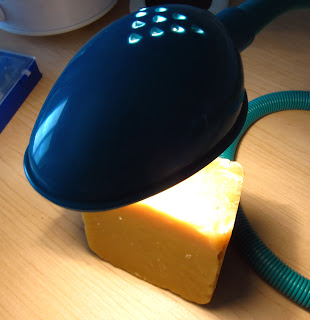| Via Cutiepie Company on Flickr |
I relish the little details. Simple, clever additions that don't try to go overboard. The use of decorative edge scissors. Textures on bows or fabric. Stamps and stickers can be good ways to include your theme without being overly expensive. Reusing items in a surprising way. A pleasing color scheme. What materials will invoke your product and your self into the overall look of the parcel?
The gift shown here from Cutiepie Company is the perfect example. It is wrapped in elementary school writing paper. Very simple, yet a surprising choice. They have added a ribbon - small, not complex, and complimentary to the lines on the paper. Stamping the recipient's name is great. The font is legible and not overly sophisticated. Red stands out on the paper and brings to mind a teacher's grade at the top of the page. I would guess the package might hold a journal, stationery, or special writing set.
The gift shown here from Cutiepie Company is the perfect example. It is wrapped in elementary school writing paper. Very simple, yet a surprising choice. They have added a ribbon - small, not complex, and complimentary to the lines on the paper. Stamping the recipient's name is great. The font is legible and not overly sophisticated. Red stands out on the paper and brings to mind a teacher's grade at the top of the page. I would guess the package might hold a journal, stationery, or special writing set.
Consider the recipient of your item. Do you sell to men and women? Simplify things by going with gender neutral packaging. The gift in the photo could be for anyone of any age on any occasion. It is charming enough to be a holiday gift. Try to find wrapping that works year round. This makes things easier on you as a seller.
As you prepare to ship those holiday orders for your handmade business, reflect on the presentation of your goods. What message are you giving about the contents?
Visit my earlier posts on holiday preparations for shipping and materials.
Visit my earlier posts on holiday preparations for shipping and materials.


























